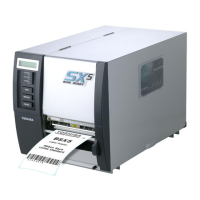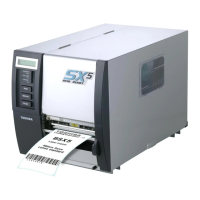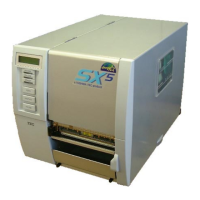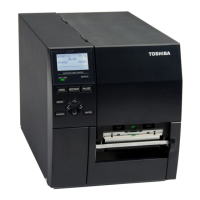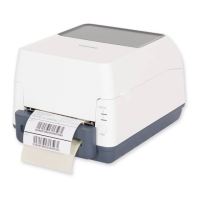2. SUPPLY SPECIFICATIONS EO10-33016A
(Revision Date: Feb. 14, 2008)
2.4 Specification of RFID Tag
2- 13
2.4.9 Caution for Minimum Label Pitch Length
When media, of which label pitch length is short, is used, data may be written on an RFID tag next to the
target RFID tag.
As the location, where data is to be written, differs among RFID tag types, a check must be performed to
make sure that the data is written on the target RFID tags.
The B-SA RFID Analyze Tool (7FM001113) can be used for this purpose.
2.4.10 Defective RFID Tag
Defective tags could be embedded while they are converted into labels, and the error rate differs depending
on the tag types or the conversion methods.
Label manufacturers should mark such defective labels with something to indicate the tag is defective, or
should prevent defective tags from being used.
Also, how to identify defective tags and good tags should be properly notified to end users.
2.4.11 Print Position Accuracy
When using RFID tag embedded media, the print position accuracy may exceed the guaranteed tolerance
of ±1 mm in all issue modes.
It is required to check the print position accuracy for each media type.
2.4.12 Paper Jam Error
Depending on the type of glue or the flexibility of labels, a label may come unstuck in front of the sensor unit,
which cause a paper jam. Particularly, the frequency of paper jam could become higher on the condition of
low operating temperature or use of short-pitch labels.
It is required to check the media feed using the media to be used under the actual operating environment.
2.4.13 Improvement of Writing Accuracy
As RFID tags use wireless technologies, writing data on the RFID tag may fail depending on environment
and characteristics of the RFID tags.
In order to improve the accuracy of writing data on the RFID tags, the following method can be used:
(1) Change of the maximum number of write retries
The maximum number of write retries is variable and can be changed in the system mode. Setting the
greater value can improve the writing accuracy. However, overall printing throughput may become
worse because a retry is also performed for tags on which data cannot be written.
For details of settings, refer to the B-SA4T Key Operation Specification (EAA-2166).
(2) Enabling of RFID adjustment for retry
The printer has the RFID adjustment for retry feature. If writing data on the RFID tag fails, the printer
automatically feeds the RFID tag forward or backward for a specified length in order to retry a data
write.
Enabling this feature can improve the writing accuracy. However, overall printing throughput may
become worse because a retry is performed even for defective tags.
For details of settings, refer to the B-SA4T Key Operation Specification (EAA-2166).
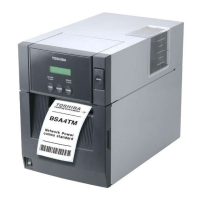
